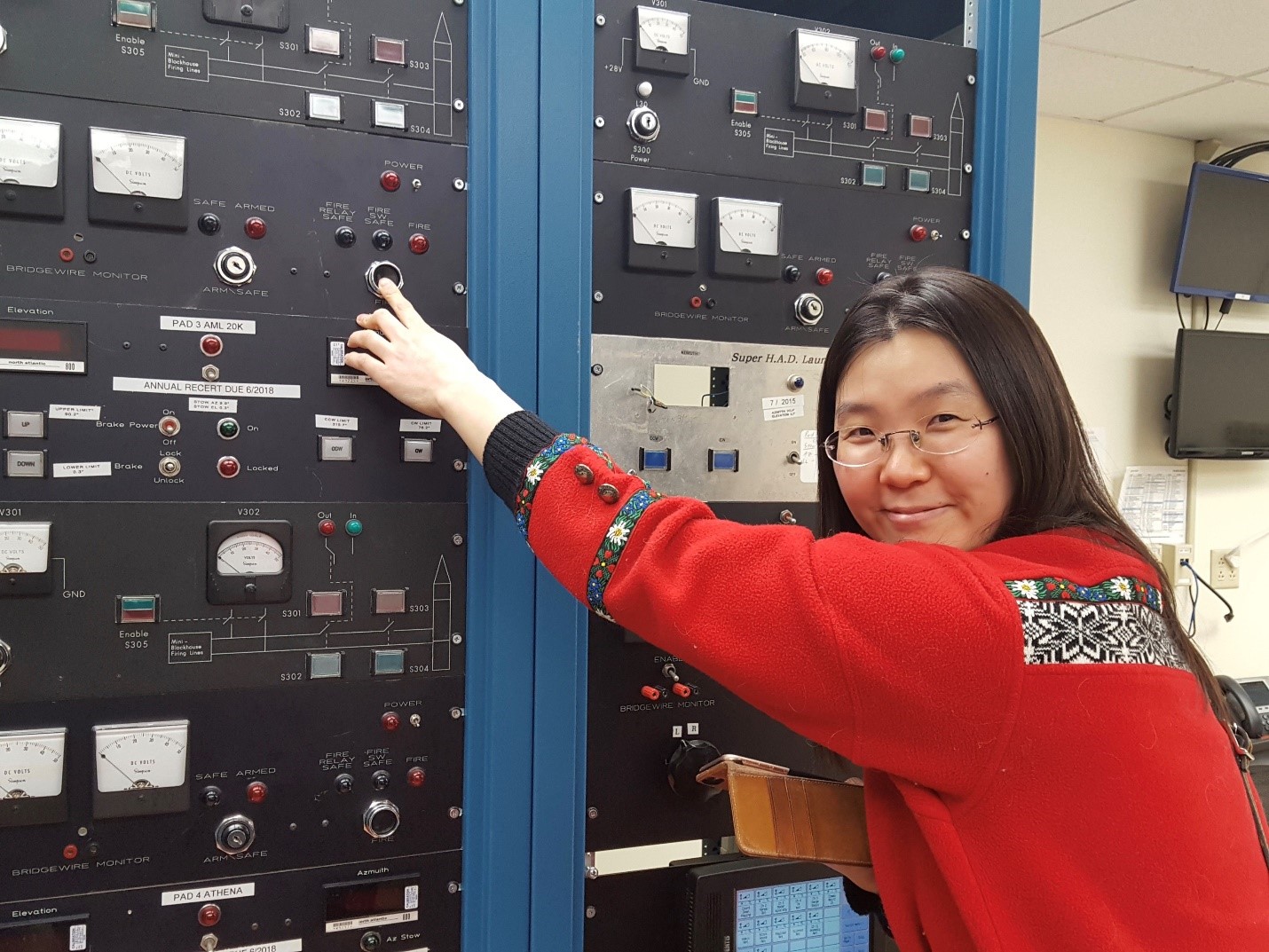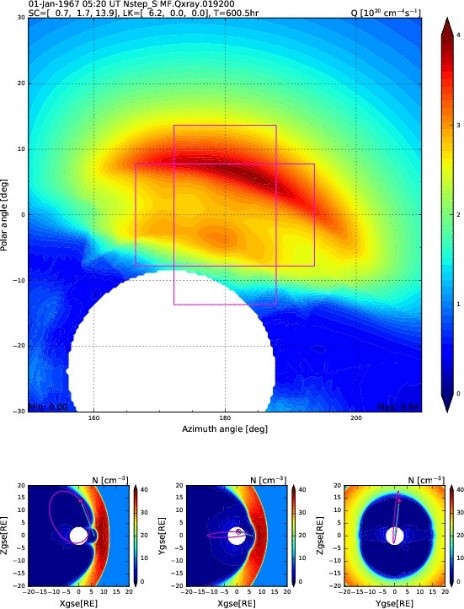Where are they now? Former NASA Postdoctoral Program Participant Hyunju Connor, Ph.D.
University of Alaska Fairbanks faculty member continues to contribute to NASA mission

Hyunju Connor, Ph.D., poses with a rocket launch button at the Poker Flat Research Range, the world’s only scientific rocket launching facility owned by a university. Photo credit: Dr. Jennifer Carter.
As a graduate of a doctoral program in physics, Hyunju Connor, Ph.D., was interested in an opportunity to collaborate with scientists at a world-renowned research laboratory. Now, as a faculty member at the University of Alaska Fairbanks, she finds herself in daily close proximity to a well-known space physics institute.
After graduating from the University of New Hampshire, Connor applied to the NASA Postdoctoral Program (NPP) to expand her skill sets and research alongside NASA professionals.
The NPP provides early-career and more senior scientists the opportunity to share in NASA’s mission to drive advances in science, technology, aeronautics and space exploration to enhance knowledge, education, innovation, economic vitality and stewardship of Earth.
With guidance from David Sibeck, Ph.D., at the NASA Goddard Space Flight Center, Connor through her research sought to understand magnetic reconnection in the magnetopause, which is the boundary between the solar wind and the Earth’s magnetosphere. She accomplished this by analyzing ion observations in the polar cusps, the region where solar wind plasma enters the earth’s magnetosphere through magnetic reconnection. She reproduced the observed cusp ion signatures through numerical simulation and checked how reconnection in the simulation creates the observed signatures. Her research helps data analysts interpret their cusp ion data for further reconnection studies.
“I think my participation with the STORM team was a pivotal moment in my career,” Connor said. “I learned how the spacecraft missions are planned, from the proposal stage to the final mission selection and beyond.”
During Connor’s tenure in the NPP, Sibeck introduced her to the Sheath Transport Observer for the Redistribution of Mass (STORM) satellite mission planning team.
“I think my participation with the STORM team was a pivotal moment in my career,” Connor said. “I learned how the spacecraft missions are planned, from the proposal stage to the final mission selection and beyond.”

Simulation of SMILE soft X-ray images during a 52-hour orbital period. Pink rectangular boxes show two field-of-view candidates of the SMILE soft X-ray imager. [Bottom] SMLE orbit (pink ellipse), location (pink dots), and look direction (blue line) projected on the XZ plane (left), XY plane (middle), and YZ plane (right). Color contour shows plasma density on each plane. The Open Geospace General Circulation Model (OpenGGCM) global magnetosphere-ionosphere model and one of SMILE orbit candidates are used for this simulation.
After her NPP appointment, Connor received a National Science Foundation (NSF) postdoctoral fellowship to continue her research at the NASA Goddard site for an additional two years. Her experiences led to an offer for a tenure-track assistant professor position at the University of Alaska Fairbanks. Not only is the university home to the world-renowned Geophysical Institute, but its closeness to the Arctic provides ample opportunities for high-latitude geosciences.
When she is not teaching physics courses or advising undergraduate and graduate student research projects, Connor continues to contribute to NASA’s mission.
“I am a key member of the Cusp Plasma Imaging Detector (CuPID) and Lunar Environment heliosphere X-ray Imager (LEXI) missions funded by NASA. Both spacecraft will visualize the Earth’s cusp and dayside magnetosphere in soft X-rays,” Connor said. “I provide modeling support for successful science closure of these missions. I am also a principal investigator and coinvestigator of several projects funded by NASA.”
Additionally, she is exercising her leadership abilities by chairing a monthly meeting for the Solar wind Magnetosphere Ionosphere Link Explorer modeling working group. She credits her involvement in these missions to her previous activities with the STORM team as a NPP participant.
Recently, Connor received the T.K. Moore Award for excellence in research and collaboration from the Geophysical Institute at the University of Alaska Fairbanks, an honor awarded to one scientist per year.
